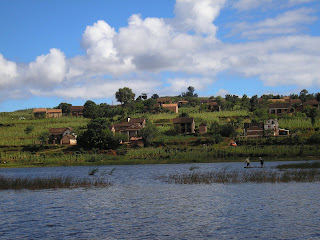


Jersey- not the US state New Jersey, but “old” Jersey- is one of the UK Channel Islands. It is actually closer to France (you can see the coast of France on a clear day!) than to the UK. I think it was Victor Hugo who said the Channel Islands were “Bits of Europe dropped by France and picked up by England.” Jersey (like the cow- renowned for its high milk yield and amazing taste, note the photo), Guernsey (also a breed of cow), Herm, Sark and Alderney are the Channel Islands (Herm and Sark seen here). Here’s a nice shot of the market in downtown St. Hélier, the capital.




































